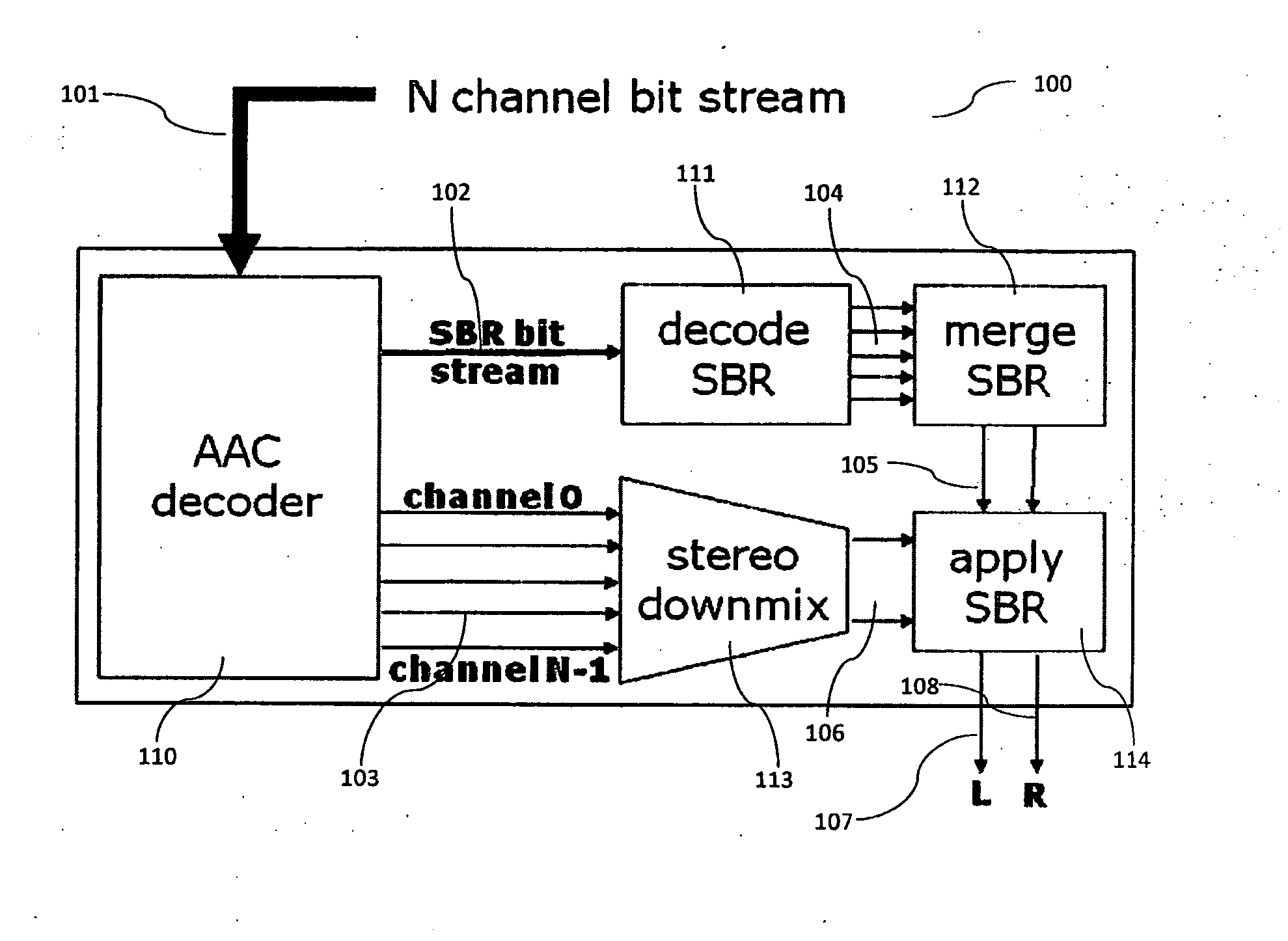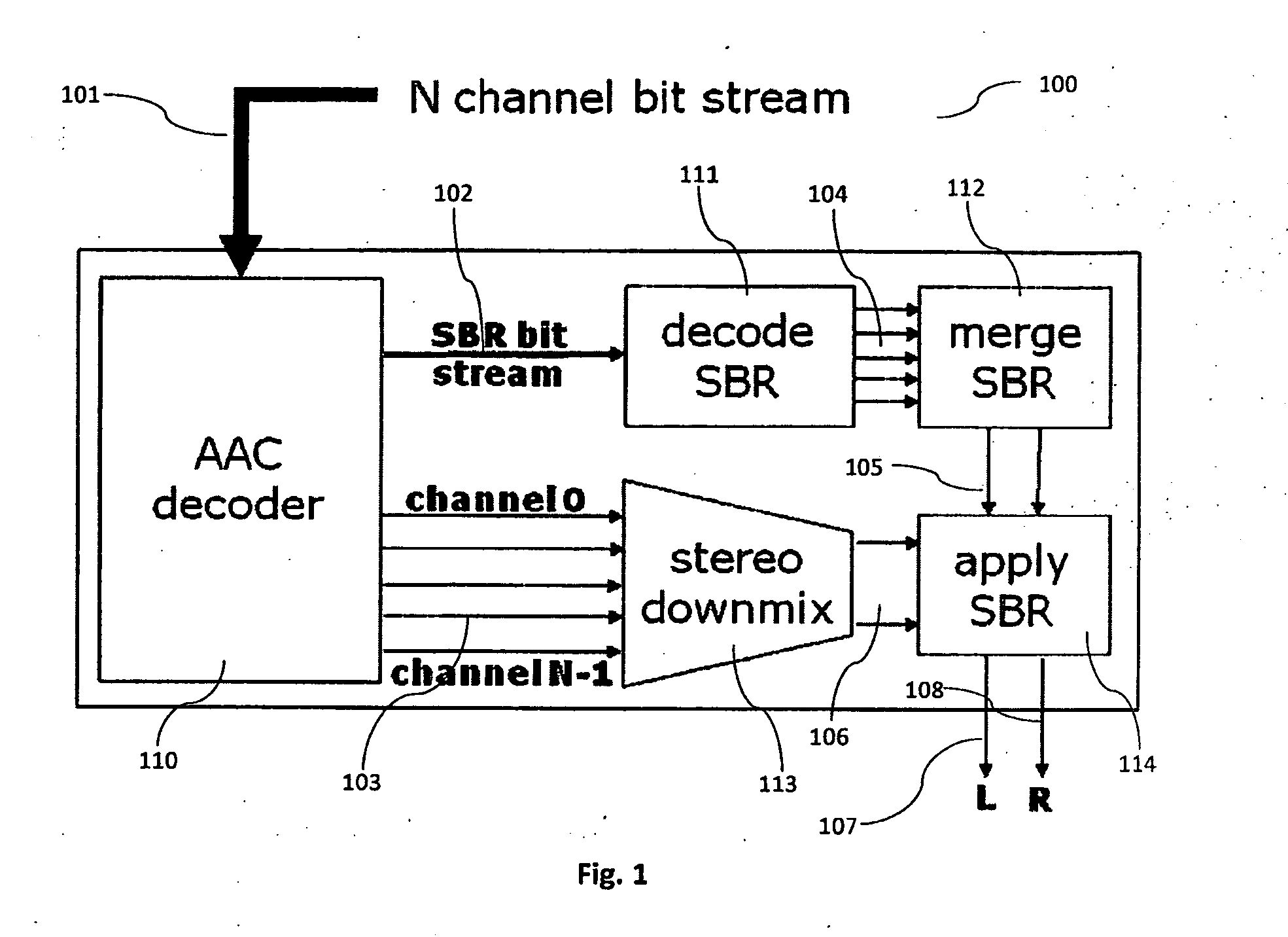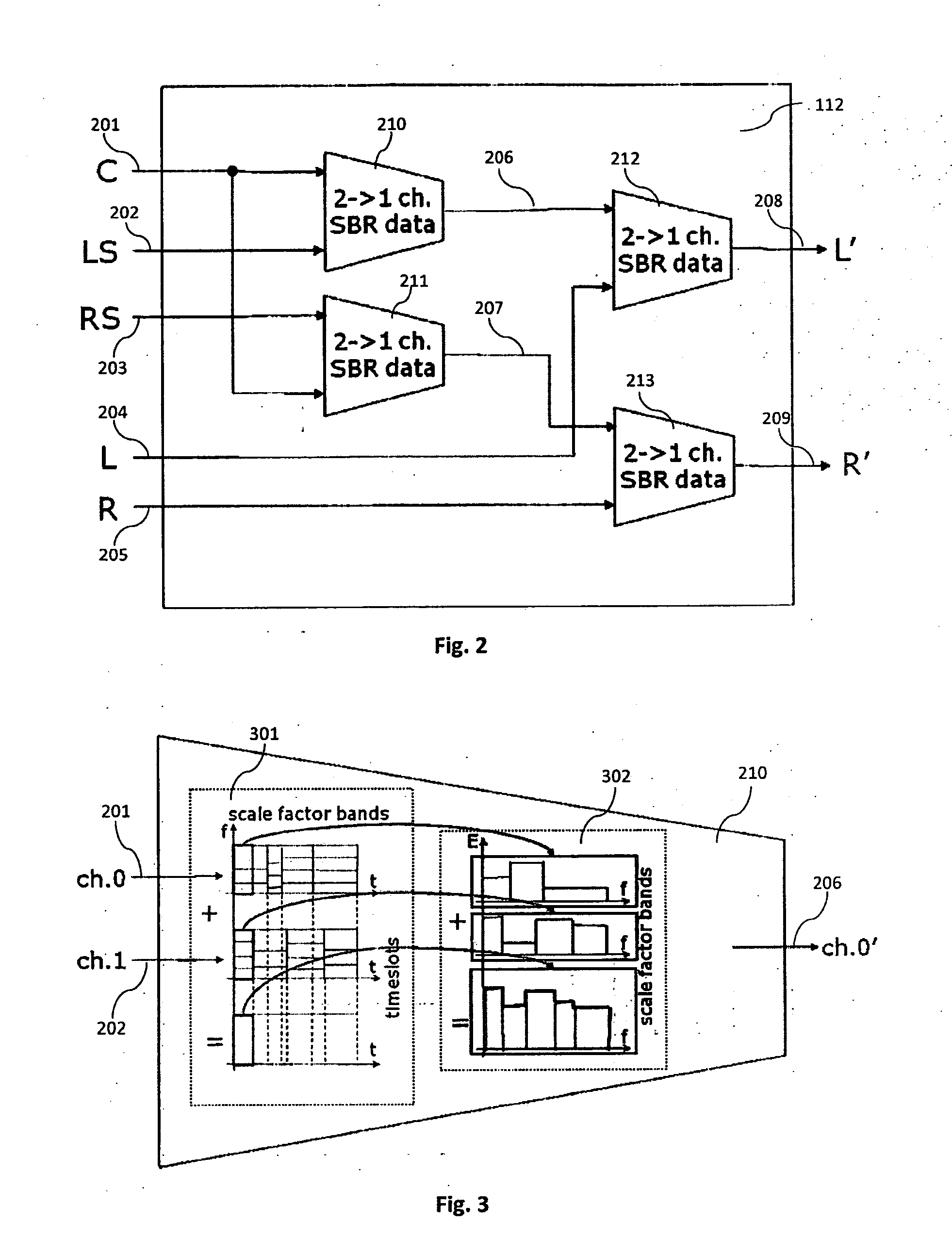Sbr bitstream parameter downmix
a bitstream parameter and parameter technology, applied in the field of audio decoding and/or audio transcoding, can solve the problems of limited stereo to mono downmix, computational and memory resources, and the specified method is needed, so as to reduce the number of output or target channels, reduce computational complexity, and reduce the effect of computational complexity
- Summary
- Abstract
- Description
- Claims
- Application Information
AI Technical Summary
Benefits of technology
Problems solved by technology
Method used
Image
Examples
Embodiment Construction
[0050]A HE-AAC decoder may be divided into an AAC core decoder that decodes the low band of the encoded audio signal, and a spectral band replication (SBR) algorithm that regenerates the high band of the audio signal using the decoded low band signal and parametric information conveyed in the bitstream. Typically, the SBR algorithm requires more computational resources than the AAC core decoder. This is due to the filter banks used at the analysis and synthesis stages of the high frequency reconstruction, i.e. the spectral band replication. By way of example, in a typical embodiment, the computational resources required for AAC decoding are about ⅓, wherein the computational resources required for decoding of the SBR parameters and for performing the high frequency reconstruction are about ⅔ of the overall computational resources required for decoding of an HE-AAC bitstream.
[0051]A decoder may receive an HE-AAC bitstream representing an N channel audio signal. However, due to variou...
PUM
 Login to View More
Login to View More Abstract
Description
Claims
Application Information
 Login to View More
Login to View More - R&D
- Intellectual Property
- Life Sciences
- Materials
- Tech Scout
- Unparalleled Data Quality
- Higher Quality Content
- 60% Fewer Hallucinations
Browse by: Latest US Patents, China's latest patents, Technical Efficacy Thesaurus, Application Domain, Technology Topic, Popular Technical Reports.
© 2025 PatSnap. All rights reserved.Legal|Privacy policy|Modern Slavery Act Transparency Statement|Sitemap|About US| Contact US: help@patsnap.com



